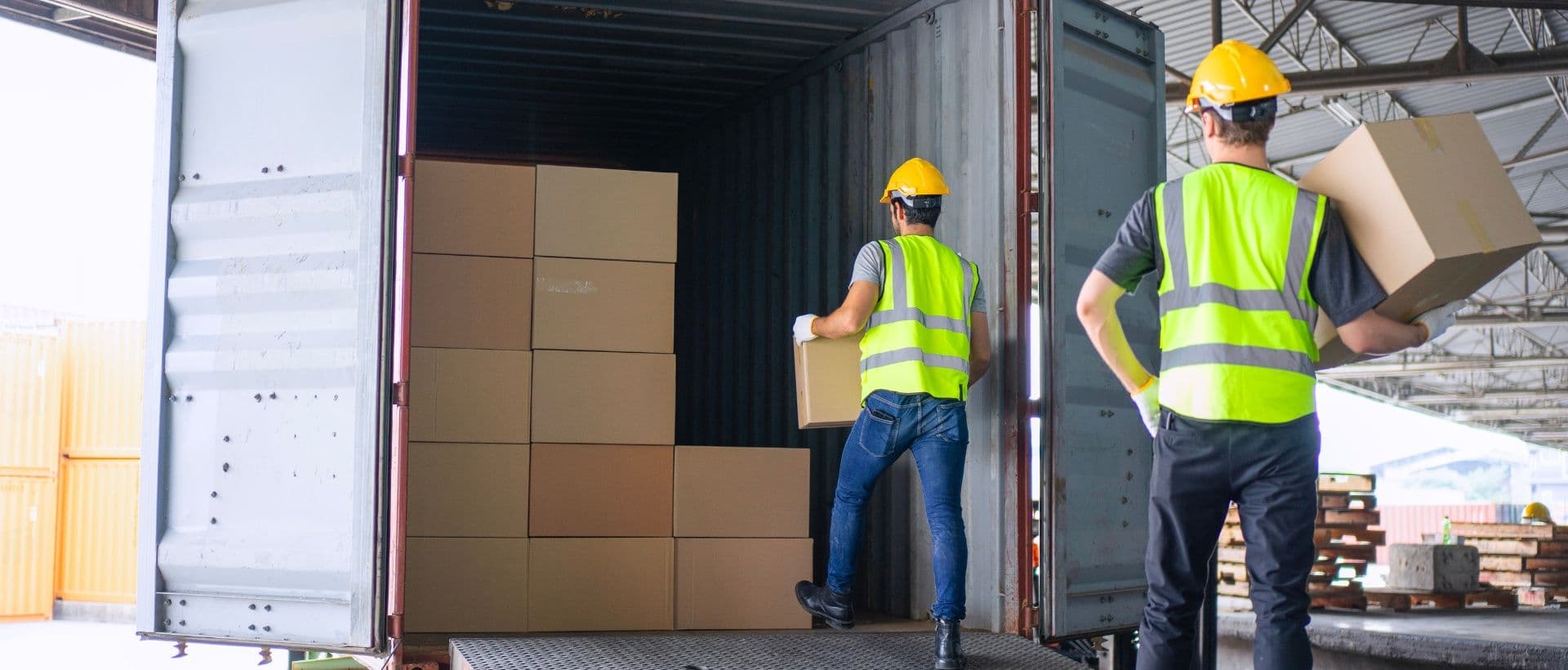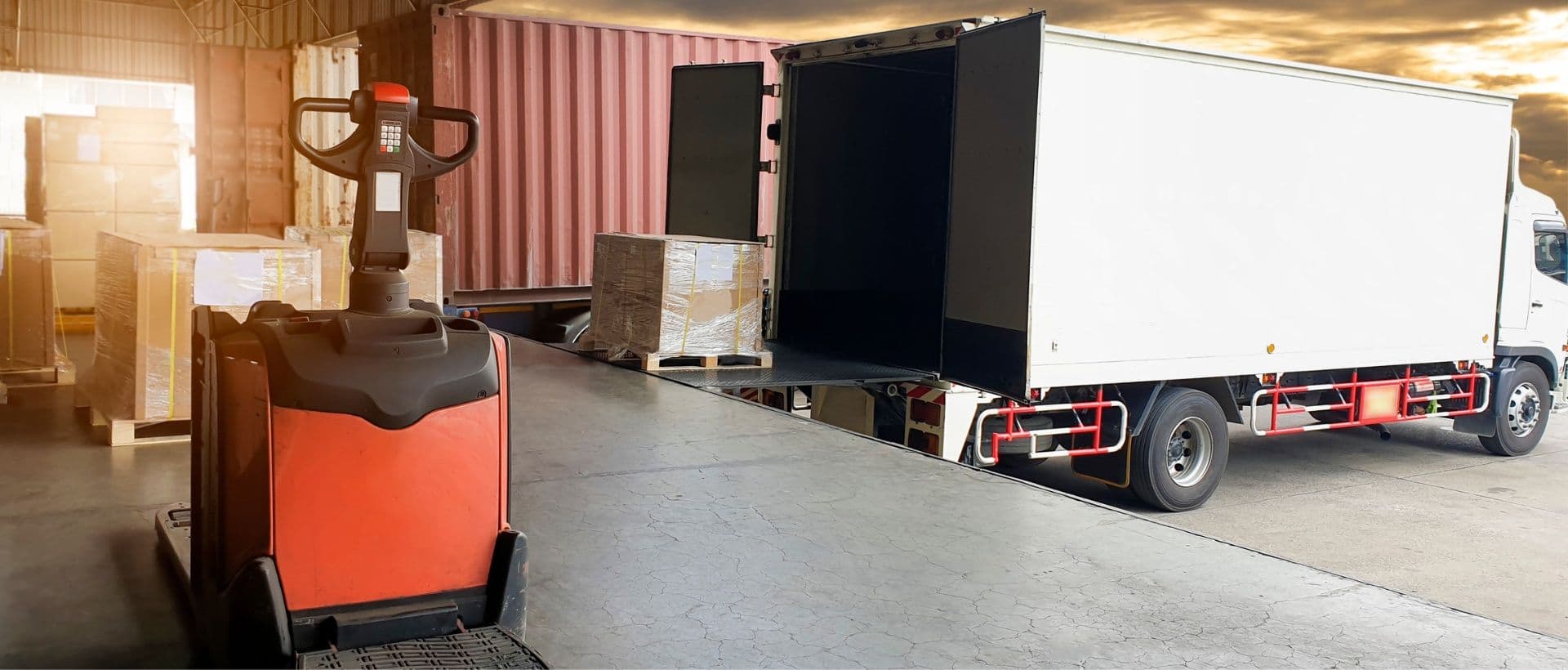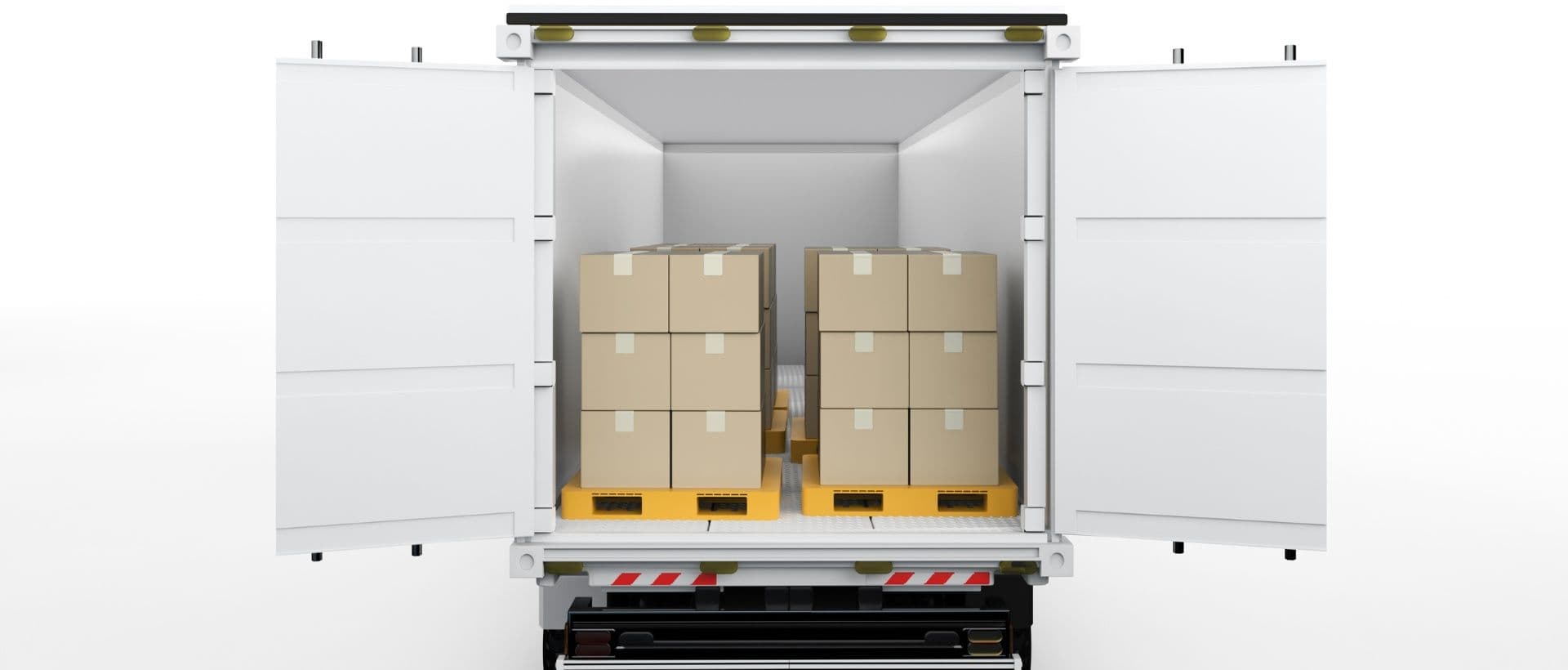
Transport modes enable the movement of goods and people from one place to another. Picking the best one depends on what you're moving, how far, your budget, and how fast you need it done.
What are Transport Modes?
A transport mode is simply a way or system for moving people or goods. Each uses its own set of vehicles, routes, and rules.
Common examples include road, rail, air, water, and pipeline. You probably use at least one of these every day, whether you're catching a bus, getting a delivery, or just mailing a letter.
The choice of mode impacts how quickly, safely, and affordably things arrive. Every mode brings its pros and cons—speed, cost, flexibility, and capacity.
5 Major Types of Transport Modes
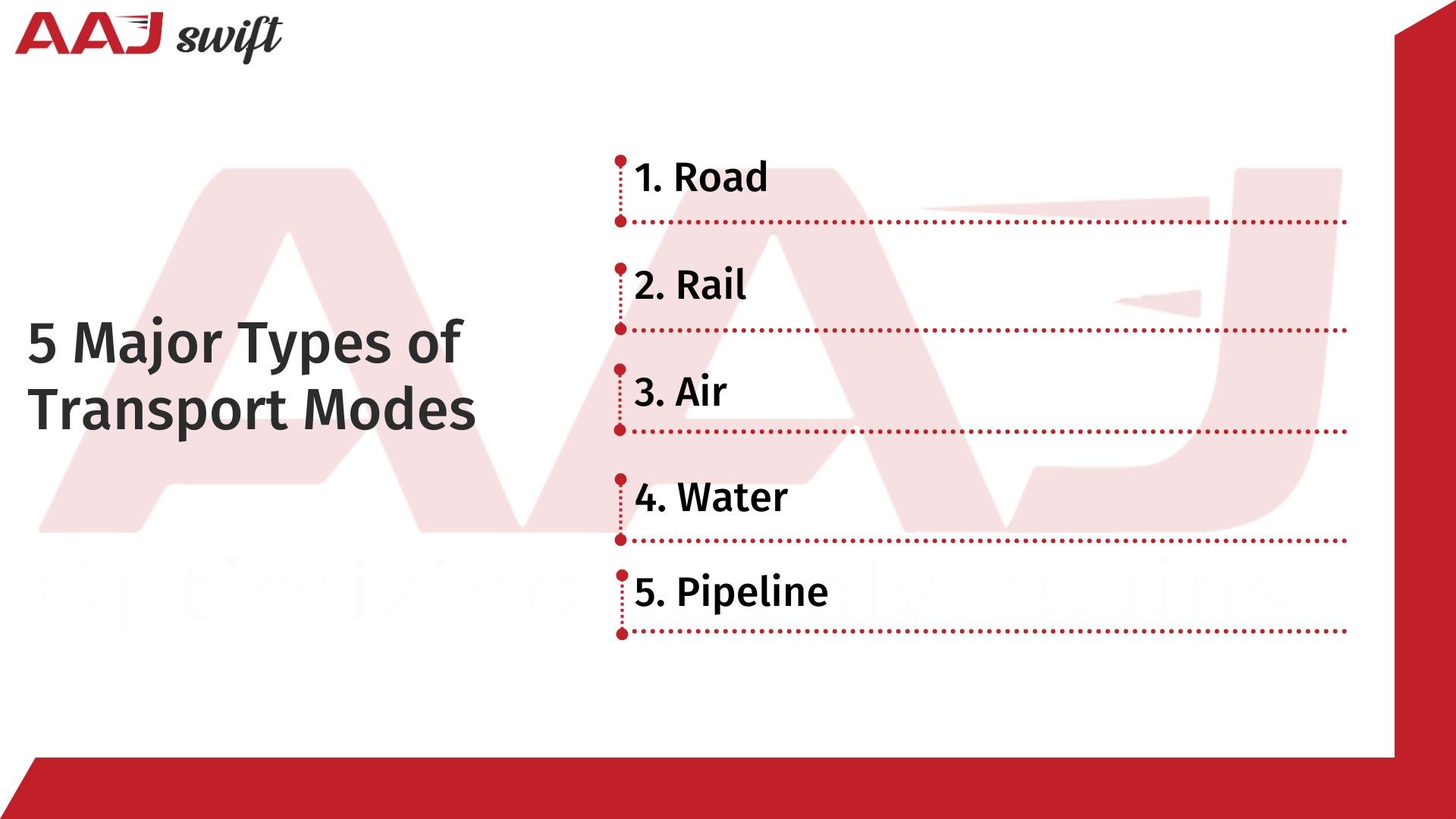
The following are the 5 primary modes of transport:
- Road: Cars, trucks, bikes—best option for shorter to medium distance and direct deliveries.
- Rail: Trains are best for transporting large and containerized loads over long distances on land.
- Air: Planes are the fastest, but they cost much higher.
- Water: Ships and boats handle heavy or bulky things across seas and rivers. Slow, but cheap for large quantities of goods.
- Pipeline: Pipes move liquids or gases, such as oil and gas. Perfect for steady, high-volume shipments.
Different Type of Transport Modes and Their Challenges
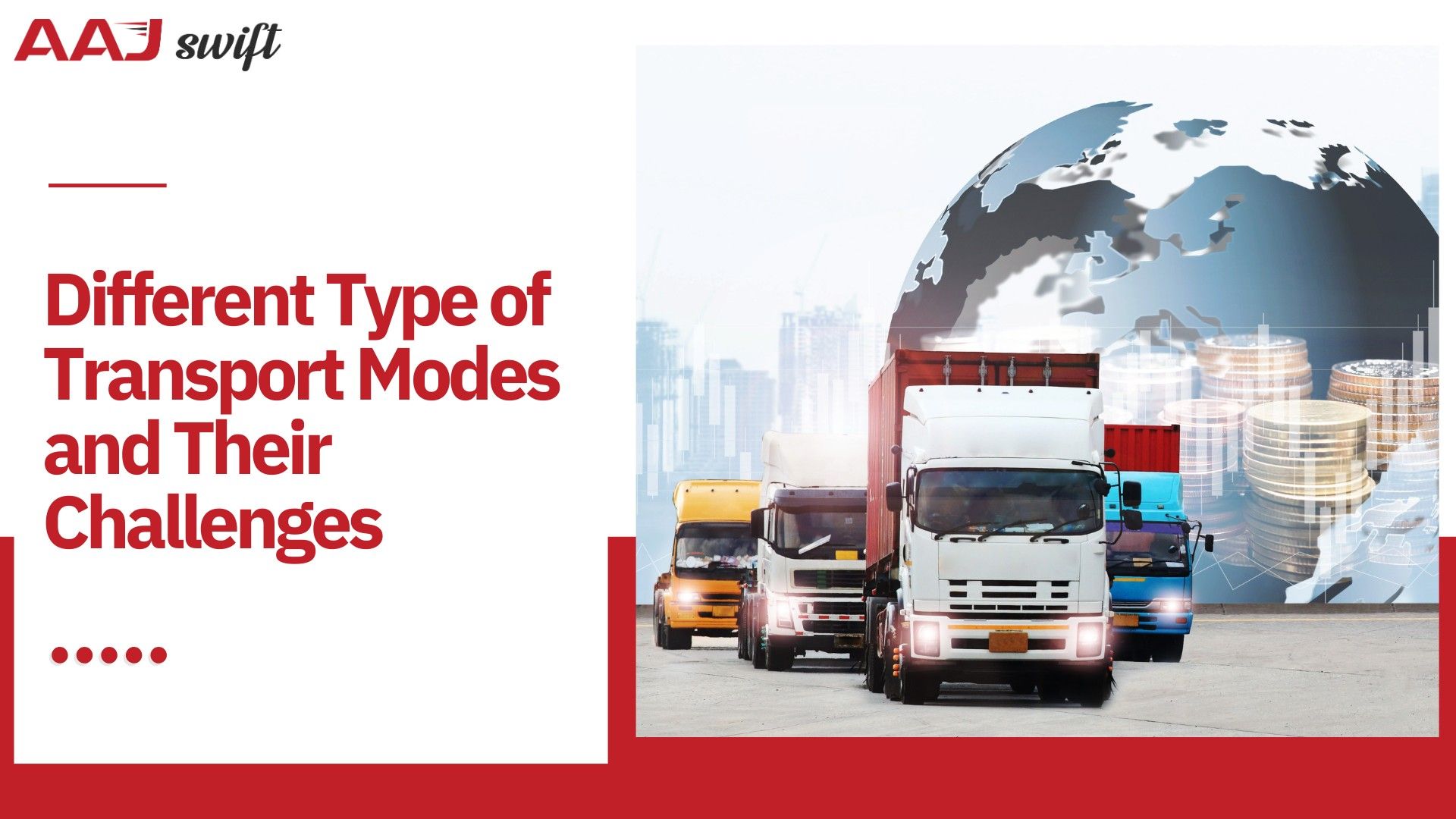
Each transport mode has its advantages and disadvantages. Your choice boils down to three main questions, such as:
- What are you moving?
- How quickly do you want it there?
- What are you willing to spend?
1. Road Transport
Road transport means trucks, vans, cars, and bikes. You can send goods almost anywhere there's a road, which makes it perfect for door-to-door and short distance.
Why Choose Road:
- Flexible routes and timing.
- Works for small loads or last-minute deliveries.
- Gets into rural and urban areas easily.
Challenges:
- Traffic and weather slow things down.
- Fuel costs and emissions can get high.
- Roads get blocked or damaged sometimes.
2. Rail Transport
Rail uses trains to haul large loads. Freight trains handle bulk stuff—coal, minerals, grain. It is the best solution for you if you're shipping a lot along regular routes.
Rail transport is your go-to for oversized shipments and long distances. It's cheap per unit, but not flexible since rails don't go everywhere.
Why Choose Rail:
- Moves a lot at once for less money.
- More predictable delivery timing (as no worry about traffic).
- More fuel-efficient than trucks for big loads.
Challenges:
- Not everywhere has rail lines.
- Need trucks for the last miles.
- Fixed schedules mean less flexibility in defining your timing.
3. Air Transport
Air transport uses planes to move goods quickly, both locally and overseas. It is the quickest mode for most distances and makes an excellent option for those who prioritize speed.
Why Choose Air:
- Fastest for urgent or perishable stuff.
- Schedules are usually reliable.
- Great for high-value, light, or small items.
Challenges:
- Expensive among all.
- Limits on size and weight.
- Weather and airport delays can disrupt air travel.
4. Maritime Transport
Maritime means ships— essential for moving goods between countries. Most global trade relies on ships for containers, oil, cars, and other goods. On top of it, you need ports.
It is an excellent option for those who are not in a rush and at the same time want to save money, especially for imports and exports.
Why Choose Maritime:
- Cheapest for very big or heavy loads over long distances.
- Handles all sorts of cargo—vehicles, machinery, raw materials.
- Efficient for bulk shipments.
Challenges:
- Much slower than air or road.
- Ports can get jammed up.
- Weather and tides are real risks.
5. Pipeline Transport
Pipeline transport moves liquids and gases such as oil, natural gas, and water. Once you've got the pipeline and pumps set up, you're good to go.
They are mainly operated or subsidized by the government. It is a good option for those who are moving one type of liquid or gas repeatedly along the same route.
Why Choose Pipeline:
- Super efficient for steady, big volumes.
- Automated flow keeps labor costs low.
- Safe for long-term, stable supply.
Challenges:
- Building pipelines is expensive.
- Only works for specific materials.
- Leaks or failures are tough to spot and fix.
Difference Between the 5 Modes of Transportation
Emerging and Hybrid Transportation Modes

Transport is changing fast, thanks to new ways of connecting road, rail, air, and even some wild futuristic systems. These shifts help goods move quickly, save money, and reduce fuel consumption.
A. Multimodal Transportation
Multimodal transport means using more than one type of transport from start to finish.
For example, a truck might pick up your goods and then hand them off to a train, or you could combine a plane and a van.
Usually, one transport company manages the whole process, so you don't have to arrange for another company.
Key benefits:
- Flexible delivery choices.
- Can cut costs by picking the best route for each shipment.
- Switching modes can decrease the delivery time and delays.
B. Intermodal Transportation
Intermodal transport uses special containers that switch easily between trucks, trains, and ships.
Your goods stay in the same container the whole way—no need to reload every time you change vehicles. The only change is the logistics company during transportation.
Main advantages:
- Less handling, so fewer damages and losses.
- Smoother transfers between types of transport.
- Standard containers mean better safety and easier tracking.
Some common intermodal container examples are:
C. Hyperloop, Drones, and Autonomous Transportation
Hyperloop is a super-fast train that travels inside tubes using magnetic force. It's still in the testing phase.
Drones have started delivering small packages, especially in places that are tough to reach. They fly over traffic, saving time, but can't carry much and don't go very far.
Autonomous trucks and cars drive themselves with sensors and computers. Some companies are already testing these on highways to move goods.
Emerging technologies mainly focus on:
- May lower costs for urgent or short shipments.
- Help with driver shortages and safety.
How to Choose the Right Mode of Transport?
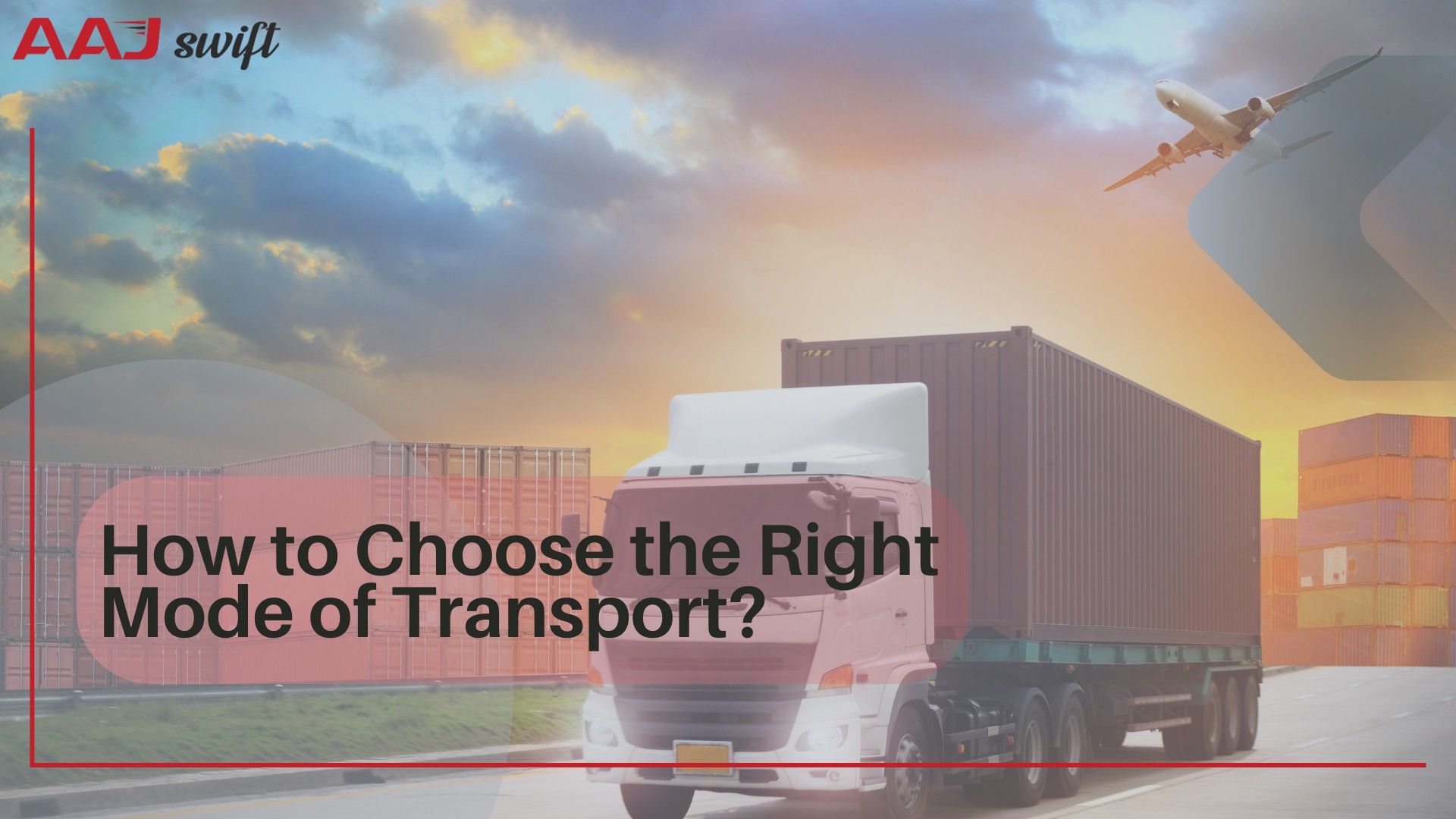
Choosing the right way to move your e-commerce inventory depends on questions: (i) What are you shipping? (ii) How fast do you need it?, and (iii) What's your budget?
Key factors to consider:
- Cost: Sea shipping is usually the cheapest. Air is pricey.
- Speed: Air wins the speed. Roads take longer, but work well within state or city.
- Type of Goods: Big or heavy items need ships or trains. Small, urgent stuff fits better on planes or trucks.
- Distance: Air or sea works for faraway places. Roadways and trains handle local jobs better.
- Reliability: Some options, like trains, stick to schedules more often.
- Safety: Fragile or valuable goods need safer, more secure transport.
Technology in Transport Management
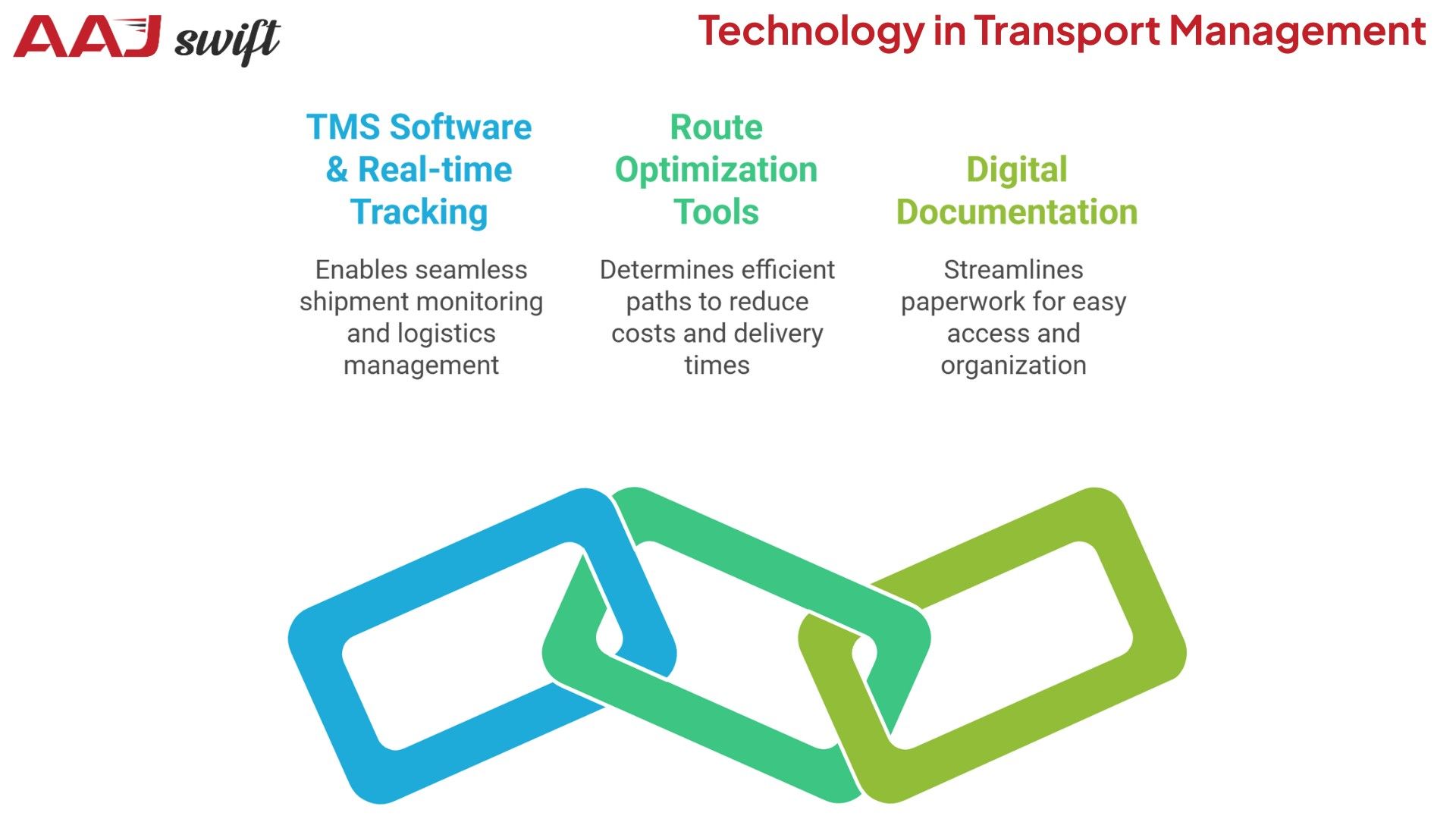
Modern transport management relies heavily on technology that not only makes moving goods safer and faster but also helps you manage costs.
A. TMS Software & Real-time Tracking
Transport Management Systems (TMS) help you organize and automate shipping. You or your transportation service provider can plan loads, schedule routes, and keep records in one place.
This not only makes it easier to avoid mistakes but also reduces the paperwork.
With GPS, you always know where your trucks and drivers are. Real-time tracking sends updates every few minutes. You'll spot if a vehicle's stuck or if something's off.
It's a lifesaver and also improves customer satisfaction and order fulfillment.
B. Route Optimization Tools
Route optimization tools use maps, traffic data, and delivery schedules to pick the best path for vehicles. They hunt for the fastest and cheapest routes.
With this, the driver can manage to escape the lines of traffic jams or roadwork. That not only saves money on fuel but also saves driver time.
Key Features:
- Finds the shortest and quickest routes.
- Adjusts to real-time changes.
- Reduces costs by saving fuel and time.
C. Digital Documentation
Digital documentation allows you to send and store paperwork, such as E-way bills and toll receipts, online.
- E-way bills track goods in transit and help you follow tax laws and other charges. With it, you can create, update, and share them online, so you and your logistics company are always in the loop.
- FASTag is an electronic toll payment system. Stick an RFID tag on the vehicle, and the tolls pay themselves as you drive through.
AAJ Swift Perfect Logistics Partner For B2B PTL Transport Needs
AAJ Swift is an emerging transport and logistics company in India. It offers tech-enabled & affordable PTL transport service across India. AAJ Swift provides logistics services in more than 28000 Pin Codes with same-day or next-day pick up.
Transport your goods at an affordable cost with AAJ Swift. Connect Now
Frequently Asked Questions (FAQs)
Que1. Which is the cheapest mode of transport?
Ans1. Road transport is usually the cheapest for short distances and PTL transport loads. For large shipments travelling long distances (usually across countries), sea transport often outperforms air or road transport in terms of price.
Que2. What is the safest mode of transportation?
Ans2. Air travel has the lowest accident rate of any mode of transportation. Trains and ships are the safest modes of transport after airways and, lastly, the roadways.
Que3. What is multimodal vs intermodal transport?
Ans3. Multimodal transport involves using more than one type, such as trucks and ships, with one company handling the entire process. Intermodal also uses two or more ways to move goods, but different carriers handle each logistics.
Que4. Which transport mode is best for e-commerce?
Ans4. For e-commerce, road and air are the go-to choices. Road is faster for shorter distances, while air wins for urgent deliveries across long distances.
Que5. Can I combine different modes of transport for B2B deliveries?
Ans5. Yes, you can mix things up—use trucks, trains, planes, or ships to move products between businesses. Sometimes this approach speeds things up, keeps goods safer, or saves you a bit of money, depending on what you want.

